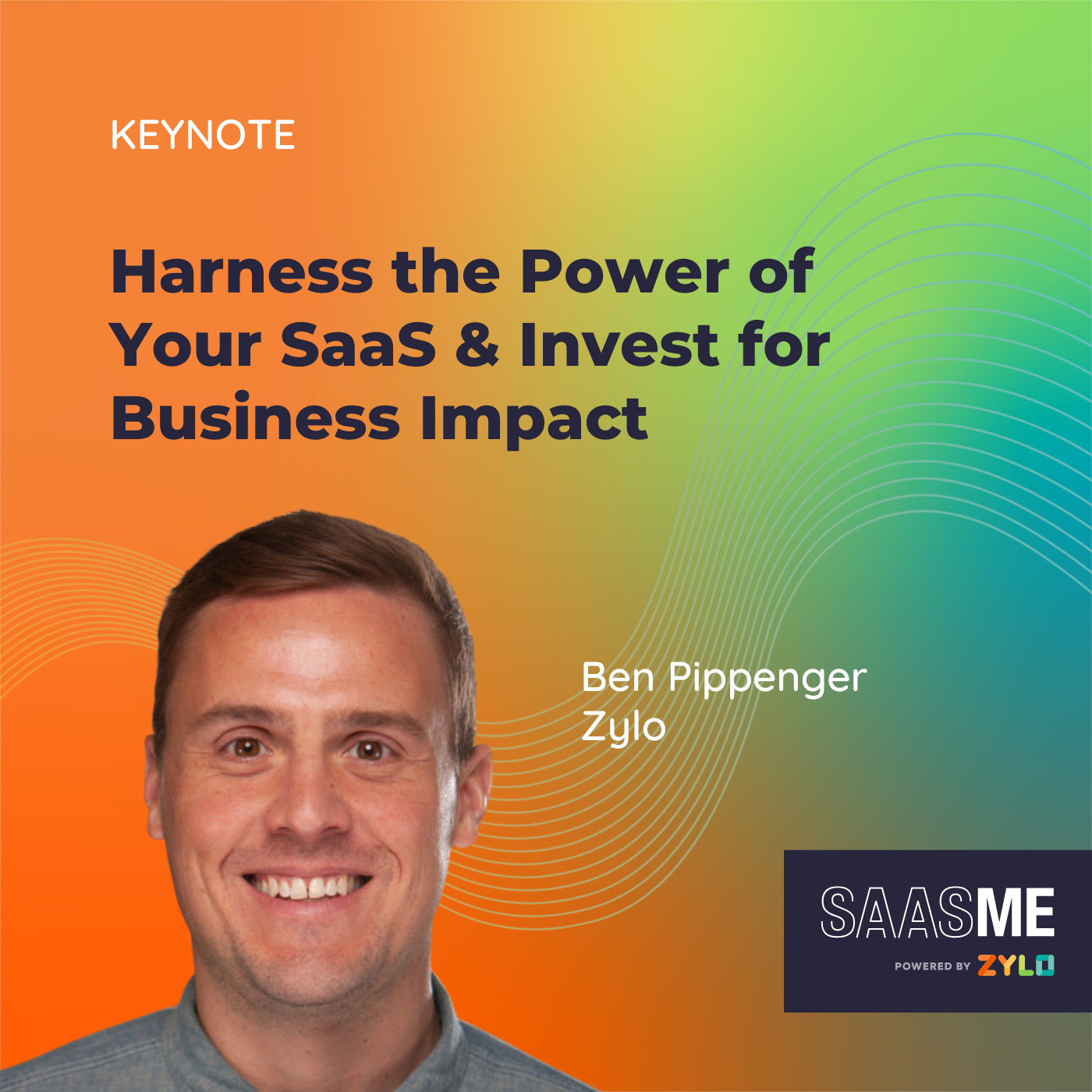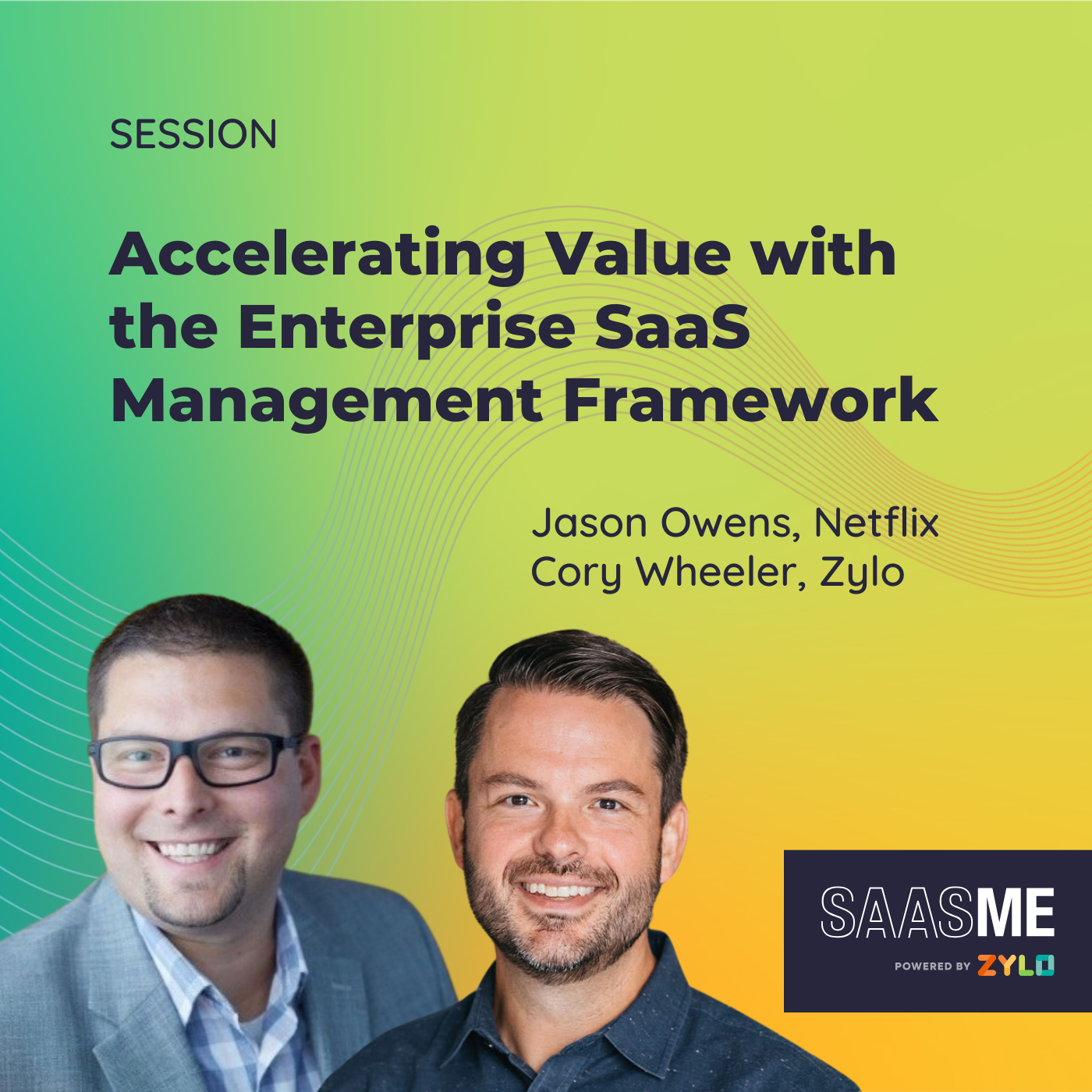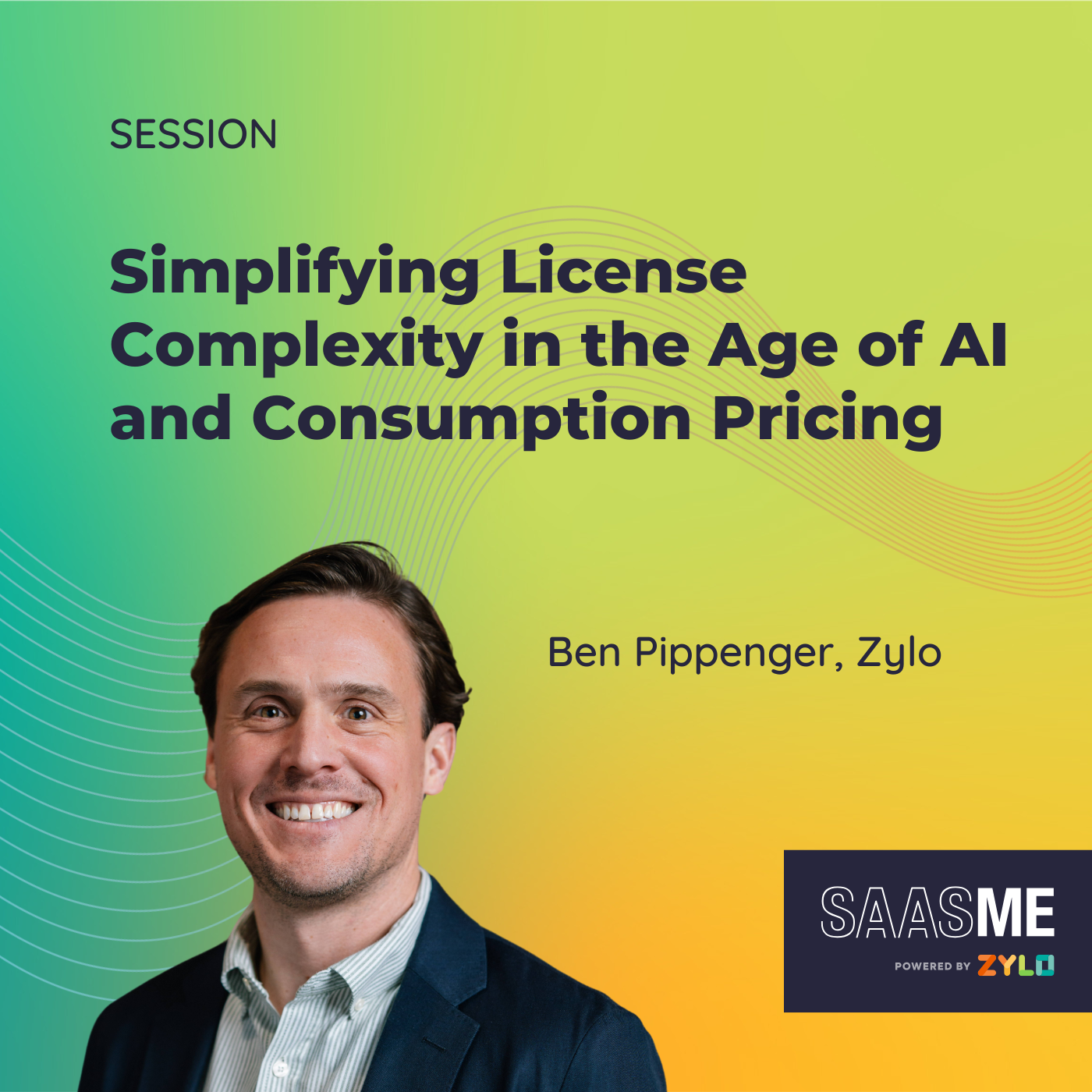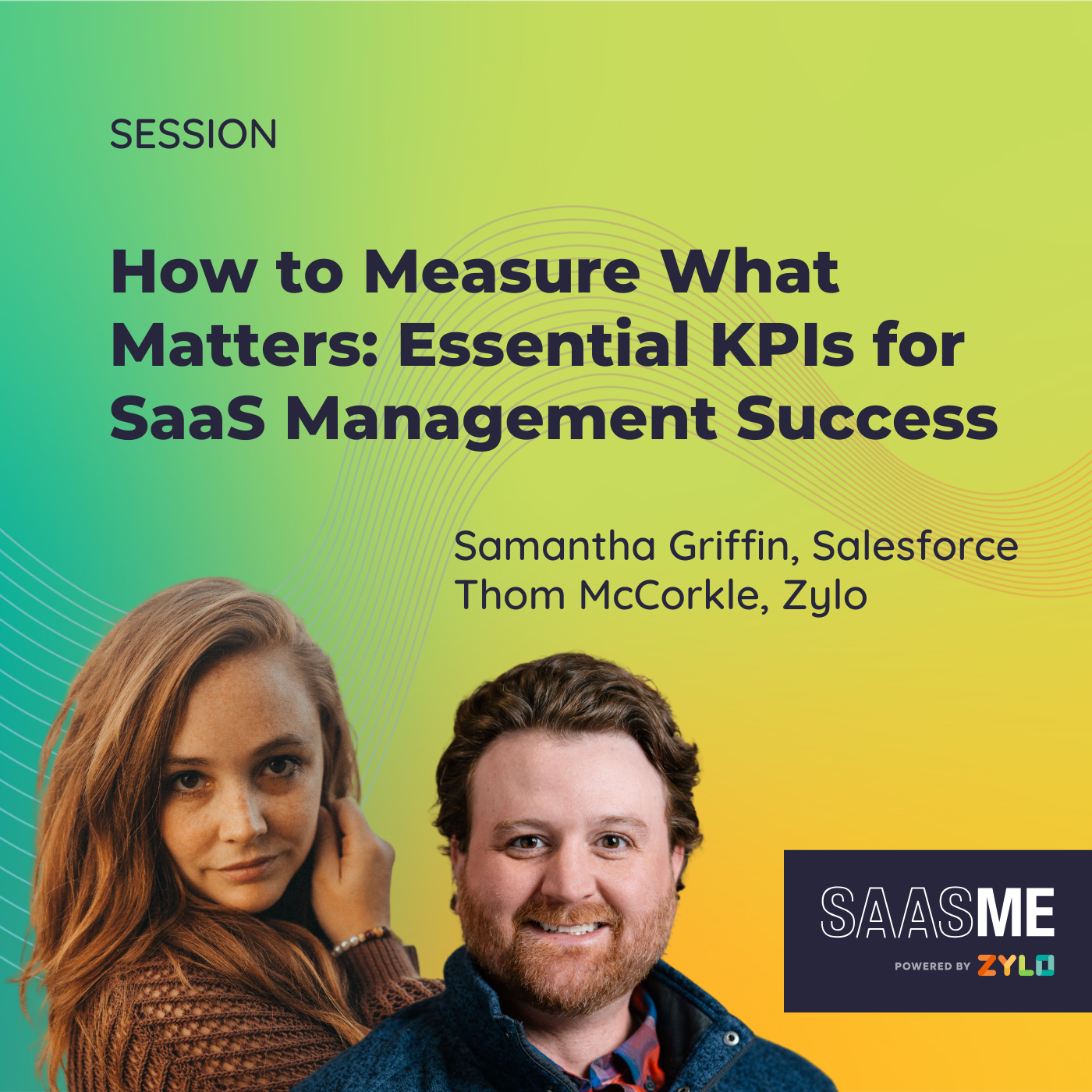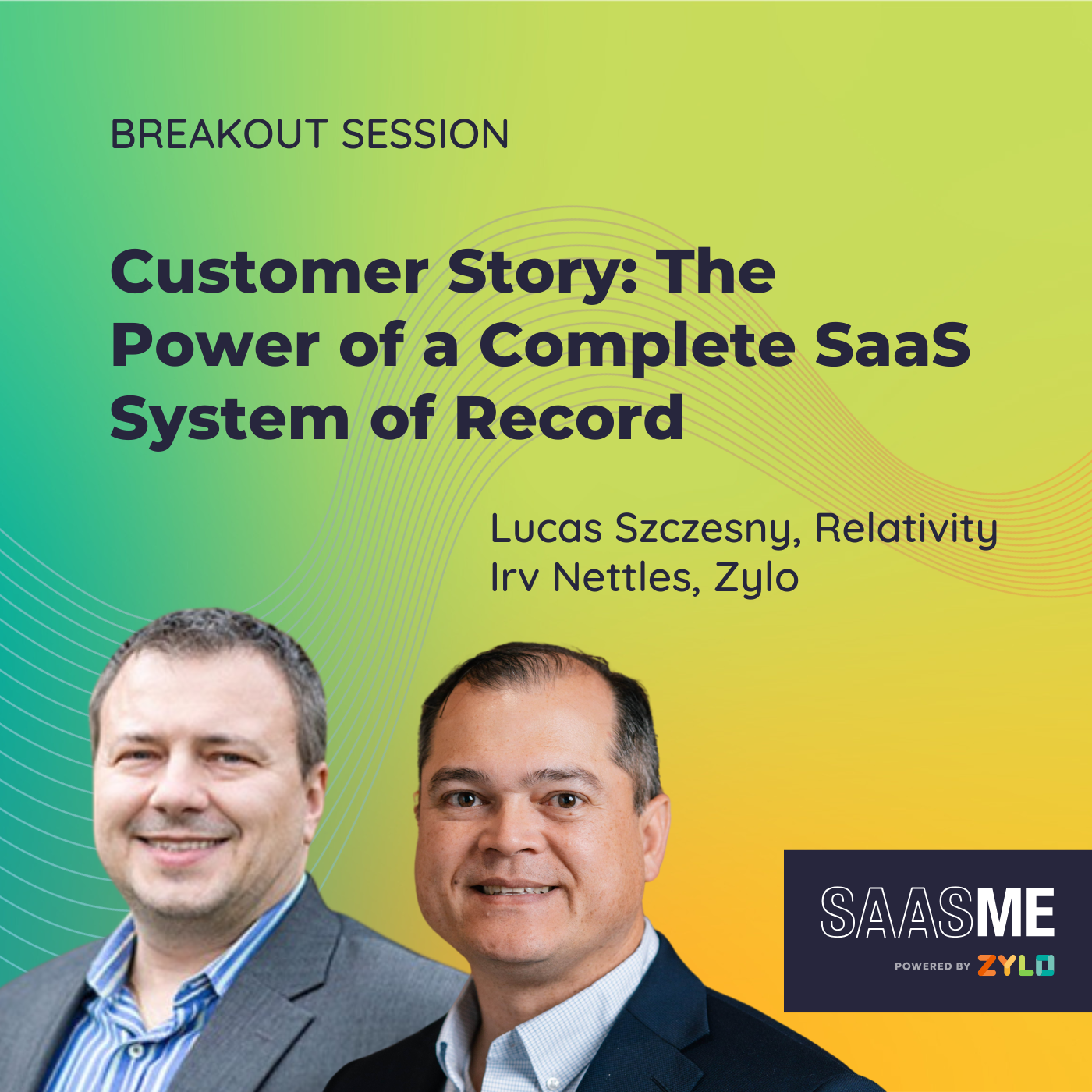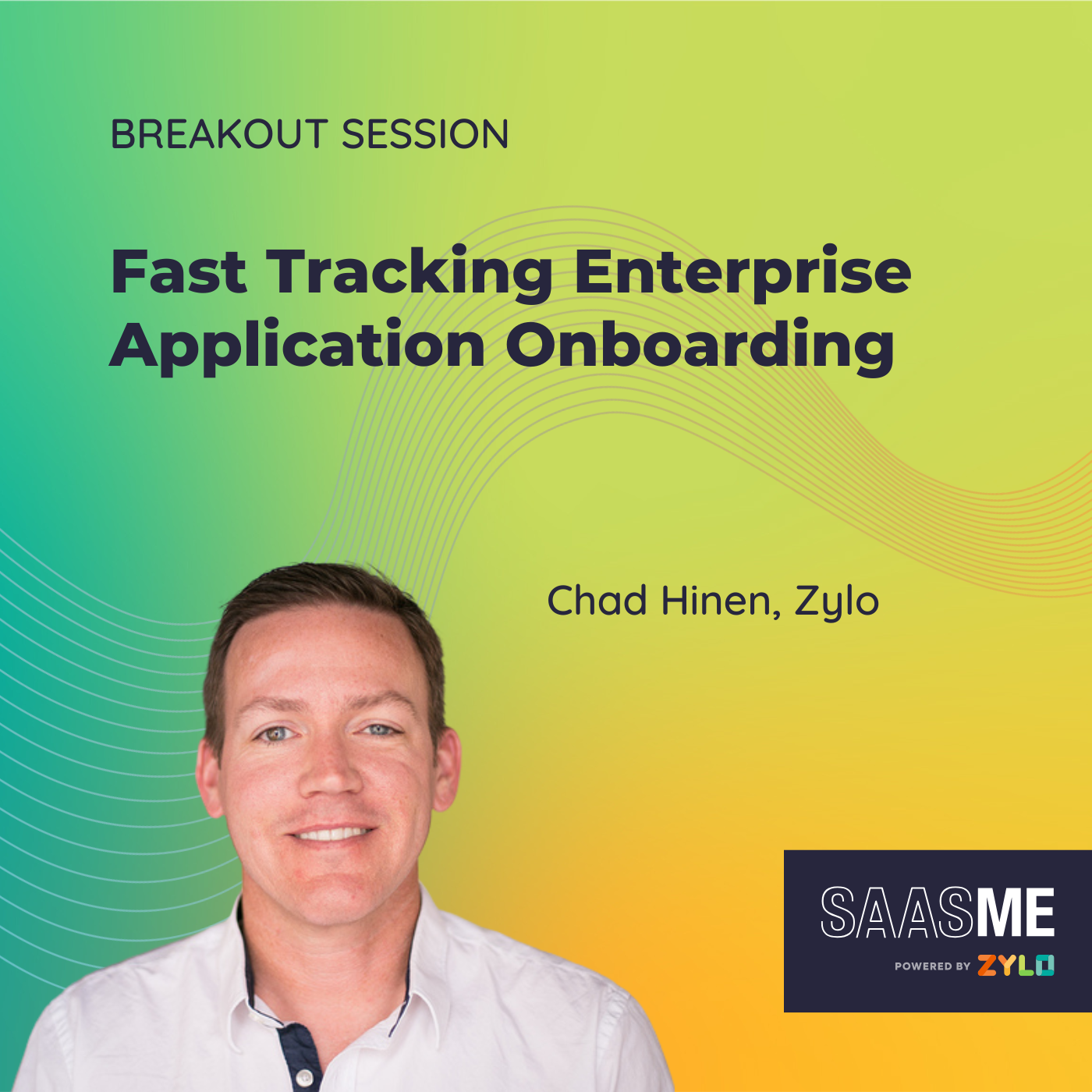Harness the Power of Your SaaS & Invest for Business Impact
- 0.5
- 1
- 1.25
- 1.5
- 1.75
- 2
Ben Pippenger: All right. Thank you, Meredith.
Ben Pippenger: As Meredith mentioned, my name is Ben Pippenger. I am one of the co- founders here at the company and I'm really excited to talk to you all today about harnessing the power of your SaaS applications and investing for business impact. Thank you again for joining SaaSMe. Super excited you all are here.
Ben Pippenger: Our time today, I'm going to spend it in three chapters.
Ben Pippenger: The first one's going to be about just the fact that SaaS is here to stay. It's not going anywhere, some of the trends that we're seeing.
Ben Pippenger: Second section's going to be about just how SaaS is such a critical part of your environments and your company and why it's so hard to find someone to own it.
Ben Pippenger: And then we'll end today talking about some strategies and tactics that you can take to make SaaS a bigger part of your business and really find a true owner within your organization.
Ben Pippenger: First and foremost, SaaS is here to stay. I think that that point may seem obvious to a lot of us here on the call today. I've been in B2B SaaS since 2005, so it seems pretty obvious to me, but there is still a big transition from some of the legacy ways that people have bought and managed software to SaaS. I think a great way to visualize this is by looking at something that an analyst called Chief Martech puts out on an annual basis. They call this the marketing tech landscape. They've been doing this for about 10 years. You can look back here on this particular slide. Back in 2011 when this first came out, there are about 150 SaaS vendors on this list that deliver products and applications to the office of the CMO. As you see the transition happen over the course of about 10 years, that list has grown significantly. This past year in 2022, that list approached nearly 10,000 applications.
Ben Pippenger: It's sort of mind boggling to think about that, 10, 000 different applications that are just targeted at tools for the marketer to get their jobs done and this isn't a unique challenge. This exists, really, in all different parts of your business from inside of marketing to your IT teams to your sales teams are all faced with these challenges of looking at this broad spectrum of applications that could be used to get their jobs done. But even though there are so many apps that can do this, SaaS is vital to organizations today. There's no way to get around that. It's where employees are going to get their jobs done.
Ben Pippenger: We put out an annual report called the SaaS Management Index that looks across all the data inside of our system and provides data points and analysis of what we see going on. Our report that came out earlier this year, we found that, on average, organizations have 330 different SaaS applications, SaaS subscriptions, inside of their environments. There's a whole bunch of apps across a single company.
Ben Pippenger: And then our partner Asana puts out a report every year called the Anatomy of Work where they're looking at how people get their jobs done. Last year's report, they referenced that the average knowledge worker switches between 10 apps up to 25 times per day. Think about all those different applications that your employees are using to get their jobs done, how much context switching is going on as they're moving from app to app to app. And these are the apps they're using to get their jobs done. This is what they're using to make sure they hit their goals and drive and deliver business value back to their organizations.
Ben Pippenger: Also, in a more hybrid world and the work from home world that we're all in today, it's the primary way that folks are collaborating. They're collaborating inside of these different applications. Think about that, back to Asana's stat of 10 different apps, that each of your employees are collaborating differently inside of those applications. It's a vital component of your workforce, of your workplace and where employees are truly going to get their jobs done. I think it's also very important to note that not only is it vital, but the wave of SaaS really can't be stopped.
Ben Pippenger: The old way of buying and managing software will no longer be existent at some point than your future. You literally have hundreds, or for larger organizations, thousands, of buyers within your companies that are buying software. It's just a lot of activity going on, a lot of things to get your arms around, and that's, again, not changing.
Ben Pippenger: Two stats here, from a couple different analyst firms. First is Gartner. They come out with an annual 2022 Predict document every year. Their Gartner Predicts 2022 document they stated that by 2026, a majority of the top 20 software vendors will sunset sales of new perpetual software requiring shifts to a subscription based or SaaS based model for those tools and increasing costs by at least 35% by 2026. Forrester came out in their global tech market outlook document that by 2025, public cloud spending is expected to double, so just a lot more spending going on.
Ben Pippenger: And one other stat here from our friends over at Gartner, on an annual or a couple times a year basis, they project out the global public cloud spend projections. You can see that on this slide. I've got them from 2020 all the way through 2026 and broken down by SaaS infrastructure and platform as a service. The chart on the right is all is charting SaaS application spend in the billions of dollars. In 2020, they're reporting 121 billion in SaaS spend, but by 2026, that number grows to 317 billion in SaaS spend, and there's a lot that happens between 2022 and 2026 as well. The amount of spend is continuing to increase and I think I included infrastructure and platform on this slide because I think it's very important to look at this and note that that is the largest category of spend across public cloud spend is SaaS, beating out infrastructure and platform as a service, just a whole lot of spend going to SaaS applications. Who should own this? I mean, we showed here that SaaS can't be stopped. This wave of SaaS is going to continue to come to us. The waves are just going to get bigger from a spend perspective.
Ben Pippenger: Who should own SaaS? That's a hard question to answer and it's hard for a few different reasons, but some key points about how SaaS has infiltrated and is used across your organization that I think are important to note. First is that SaaS is critical. It's absolutely critical. These are the tools, as we mentioned, that employees are using to get their jobs done, to collaborate, and so when there's an interruption in those SaaS applications, that can cause a major impact.
Ben Pippenger: About a week, week and a half ago, I'm sure some of you here witnessed this or experienced this, Zoom was down. You couldn't log in to Zoom to join a meeting for a period of time. It caused some major disruptions. I took to Twitter to do a little searching and pulled out some interesting tweets that I found. Zoom being down is like the adult equivalent of a snow day in a working from home world. What are we supposed to do here? We can't actually get on and collaborate and work with our peer sets.
Ben Pippenger: Someone else says," Right now all the Zoom engineers are scrambling to get onto a Google Hangout in order to diagnose their outage," which I thought that was just funny from something... A challenge I'm sure we all deal with today with multiple capabilities being available across many different tool providers.
Ben Pippenger: And then lastly, Evolve Credit," We're sorry to inform you that our webinar video conferencing software, Zoom, has experienced an outage. We cannot proceed with the webinar as planned because we can't access it at this time. Really significant impacts to business when things go bump with your SaaS applications.
Ben Pippenger: Second point is that SaaS is expensive. We showed that earlier with the spend figures from Gartner and Forrester, but we all oftentimes see this with our own company at Zylo but then also within our customer base is that SaaS and software is the number two highest operating expense, right behind people. When you're looking at those categories of expenses that are happening that where you're spending your money, it's really important to think about maybe I should be working to get my arms around this. While it's difficult and challenging, it's something that's really going to impact your organization just based off of how much money you're spending on SaaS applications.
Ben Pippenger: A third point here is that SaaS is decentralized. Again, this makes it really challenging because you think about how SaaS is bought and managed across an organization.
Ben Pippenger: At Zylo, we look at this in three different buckets. We call them IT managed applications, non- IT managed applications and employee led purchasing. Your IT managed apps, which accounts for about 23% of the applications that are in your company are those apps that your CIO and IT teams are responsible for going out and procuring and sourcing and buying and then managing. They've got people on the team that are oftentimes experts or professional careers around managing these applications, like your identity teams or your Salesforce admins so they're fairly well supported, but this is where we've seen a lot of transition away from these centralized IT managed applications. In fact, since June 2020, we saw a decrease of about 35% of spend for IT managed applications.
Ben Pippenger: The next bucket there in the middle are your non- IT managed apps. These are the apps that your lines of business are responsible for buying, your CMOs are purchasing or your head of sales, in order to get best in class tools for their employees to get their jobs done. This accounts to about 40% of all applications. And then lastly are those employee led purchasing. These are when employees are going out finding applications that they prefer or they want to use, swiping their credit card and getting expensed back for purchasing those applications. That accounts for about 37% of all apps and we also saw a significant increase, about 12% increase, of the number of apps that are being purchased by employees through the pandemic, since June 2020. SaaS is decentralized.
Ben Pippenger: Fourth point in here is that SaaS is risky. Breaches do happen. I mean, this is software. These are hosted applications and breaches do occur. It's something to make sure that you're aware of and that you're helping track, but these things are definitely going to occur. You can see a couple of the examples of recent breaches up on the screen right now. SaaS definitely is risky from that regard. It's from just knowing who has access to these tools, if they should still have access to these tools, if they're accessing at the right levels, if they have extended privileges that maybe they shouldn't. There's some risk involved with that.
Ben Pippenger: And then lastly, with shadow IT, with the stuff that's sort of flying under the radar that IT may not know about, what are those applications? Where is that data being stored? Do those apps meet the controls and policies in place you have as a business? Definitely some risk involved with the shadow IT side as well. SaaS is definitely risky and then
Ben Pippenger: last point here is that SaaS is complex. We talked about the MarTech guide, which you're seeing here, of the 2022 guide with about 10, 000 apps on it, very complex. There's thousands of vendors that are being looked at, that are being purchased from, that are being analyzed. There's always merger and acquisition activity here within the space. You have companies buying other companies to enhance their capability set and also speaking of capabilities, just the confusion around what all these apps do. Where is their crossover? Where do I have redundancy? And expecting someone to know what each and every app is and what they do, it's a very complex landscape that organizations are trying to get their arms around.
Ben Pippenger: For all these reasons, what we see a lot of times is that you have people acting like my buddy here, Lloyd Christmas, where they're turning a blind eye. They're pointing fingers across the organization. Who owns what? Why they own it, who's really accountable for all of the success of these applications, the spends associated with them? If there's a breach or something happens, who really should be the person or the teams that are making sure that you're protecting yourself and staying out for those things? We see finger pointing. But what I'm going to try to persuade you all to do here is to really think about that, think about what we talked about at the start, these challenges and become more like my other friend here, the Rock, where you're looking at all of this and you're saying," Gosh, we can see that this has such a big impact on our company. We know that this is challenging to manage, but man, there's a lot of opportunity here if we're able to get our arms around it." Really bring it on, bring on the challenge and drive some of the impactful business results that you're able to with SaaS. Really seize that opportunity. Step up, seize that opportunity. See that it's there and figure out the best way to manage these applications. Don't be Lloyd Christmas. Let's be the Rock. Let's remember that. Always let's be the Rock, not Lloyd Christmas.
Ben Pippenger: When I see say," Seize your opportunity," really when we see the most successful teams that are managing SaaS and driving the most business impact from it, it's when IT and finance teams partner up. They join together and they create that true business impact. For the sake of oversimplifying, I'm going to break down really what those teams uniquely care about in silos and then what that can result when they come together. CIOs and their teams care about the SaaS applications. CFOs and their teams care about the dollars and app owners. The people that are choosing these apps care about the results.
Ben Pippenger: If I take a double click into that real quick, when I look at CIOs and their teams, and this is for applications in general, not necessarily apps that they own, not thinking those IT managed applications, but just across the board, apps that are used across an organization, what does the office of the CIO and your IT teams care about? Well, number one, they care about business risk. What sort of risks are being introduced by us using or storing data inside of this application? Access control sort of falls into risk as well. Employee experience is a big one, making sure employees know what tools are available, how to get access to it, how to support or where to go for support, onboarding and off boarding, all that good stuff IT teams think about.
Ben Pippenger: And then from an enterprise architecture lens, overall capabilities and what are the needs the business has and how are we addressing those? And then connectivity. How am I making sure all those apps are talking and connected? As employees are using those 10 different apps a day, it's all based off the same foundation. CFO, procurement, finance teams, the dollars and cents of it all. Again, it's probably oversimplifying the hard work you all do, but when it boils down to what you're driving forward with, it's do we need all these applications? Are we choosing the right applications? Are we negotiating these properly to make sure that the cost is right, that we're spending the right amount based off the value that we're getting out of these tools? Am I staying on top of this from a renewal perspective to know that hey, I got a renewal coming up, rather than being a proactive state, having a data- driven proactive state to manage those with your vendors. Budgeting and forecasting, making sure that in the business they know what budgets are and you're forecasting those things appropriately.
Ben Pippenger: Really key parts to all these things being successful in pulling this all together is a strong point of view and strong practice within your CFO, the office of CIO and finance and procurement.
Ben Pippenger: And then lastly, on the app owner side, results. Are our needs being met based off of the software that I selected? Are we able to see tangible ROI or are we able to see those results to prove that this app is what we need in order to drive the business forward? Are we managing our licenses appropriately so that we make sure we're staying within our budget that we had forecasted? And am I successfully working with this vendor to have a great renewal when that time comes? All sort of unique areas that we tend to see folks operating as in a silo, but the big challenge here is that these are interdependent problems. All of these things need to work together and be solved together to truly be impactful for the business and SaaS management is really how you get there.
Ben Pippenger: SaaS management is a solution to bring down these silos. If you're not doing this today, as we talked at the start, more spend, more apps. Your SaaS portfolio's only going to get bigger and bigger so it's important that you're really doing this today. And unless you are proactively, strategically managing your SaaS applications, I can guarantee that you already have more SaaS than you think, more apps and more spend. We've been doing this for six plus years and nearly I can't think of a single time where we haven't worked with a customer and found more than what they thought, more than they expected. You look at the Gartner spend chart from earlier, you look at some of the projections around the transition from every software provider to a SaaS based model. Now's the time. You got to seize this opportunity. You got to jump in, reach across the hypothetical table and partner with your IT and your finance teams. Bring your app owners to the table to really collectively break down those silos to solve the problem.
Ben Pippenger: When you think about this, when I think about IT teams and finance teams coming together, yes, you can absolutely do it. You can go alone. You can try to tackle this from one side or the other, but you're really missing the key elements. You're missing your counterpart. You're missing your partner in crime here to really truly solve SaaS management within your organization. You have your finance team looking at the dollars and the process and how you're working with your vendors. You have your IT team really caring about these applications and making sure that employees are having a great experience. These things need to come together so that all voices are aligned here and you can be much stronger when you're together. Together you can really drive these great business impactful conversations to make sure that SaaS is what it can be inside of your organization and you're driving real change and real results for your employees and for your people.
Ben Pippenger: A couple closing thoughts here as we wrap up. Number one, SaaS is here to stay and it's growing. I think we showed that in some of the data earlier on that we shared. Challenges exist to owning SaaS and really just challenges exist with SaaS in your organization today but I always say where there's challenges, there's a ton of opportunity and that is the case here. There's a massive opportunity for IT and finance to truly come together to own solving SaaS and organizations that are doing this are driving real and impactful results for their business and for their employees. I'm really excited here. In a couple sessions you'll be able to hear some from some of those customers directly.
Ben Pippenger: Thank you. Really appreciate your time. Thank you for being here. Thank you for coming to SaaSMe and hope you enjoy the rest of your day.
DESCRIPTION
SaaS has become vital to how organizations operate. From enabling critical workflows to customer experiences to team collaboration, it’s the glue that holds organizations together. Hear from Zylo Chief Business Development and Strategy Officer Ben Pippenger as he shares the unprecedented opportunity CIOs, CFOs and their teams have to partner and become a force multiplier, harnessing the power of SaaS to create value and drive transformation for a more digital, innovative and efficient future.
Today's Guests


